Inequality and the Coming Storm
EDOARDO CAMPANELLA
Walter Scheidel,The Great Leveler: Violence and the History of Inequality from the Stone Age to the Twenty-First Century, Princeton University Press, 2017
Branko Milanovic, Global Inequality: A New Approach for the Age of Globalization, Harvard University Press, 2016
Peter Temin, The Vanishing Middle Class: Prejudice and Power in a Dual Economy, MIT Press, 2017
Keith Payne, The Broken Ladder: How Inequality Affects the Way We Think, Live, and Die, Viking, 2017
Chrystia Freeland, Plutocrats: The Rise of the New Global Super-Rich and the Fall of Everyone Else, Penguin Press, 2012
MILAN – The world is becoming increasingly unequal, and at an astonishing pace. According to Oxfam, in 2010, 388 billionaires owned as much private wealth as the poorer half of the global population. By 2016, a mere eight people did. The Great Recession that followed the 2008 financial crisis has hit the vulnerable especially hard, while many of the gamblers who triggered it have grown wealthier.
The accumulation of massive fortunes by a tiny coterie of plutocrats represents the tipping point in a more complex phenomenon. Although China’s meteoric rise to become the world’s second-largest economy (by GDP) has compressed inequality at the global level, the fact remains that disparities within most countries have been expanding rapidly.
In developing economies, the past three decades of globalization have produced a burgeoning urban middle class, but widened the gap between cities and rural regions. And in advanced economies, globalization and technological progress have conferred significant benefits on a small minority of highly qualified professionals, but squeezed the middle class. The standard of living for those not at the top of the income scale has stagnated, owing to the availability of cheap labor abroad and inadequate redistributive policies at home.
The five books under review shed light on different dimensions of this multifaceted phenomenon. The Great Leveler, by Stanford University historian Walter Scheidel, and Global Inequality, by CUNY economist Branko Milanovic, offer long-term historical perspectives. The Vanishing Middle Class, by MIT economist Peter Temin, The Broken Ladder, by University of North Carolina at Chapel Hill psychologist Keith Payne, and Plutocrats, by the former journalist and current Canadian Minister of Foreign Affairs Chrystia Freeland, highlight the diverging fates of those at various levels of the income scale. All of them propose thoughtful solutions for an ailment that has started to seem untreatable.
A BLOODY OLD PROBLEM
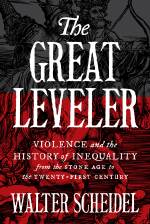
For good reason, rising inequality is widely regarded as the defining economic challenge of our time. Yet Scheidel contends that, while today’s levels of inequality are alarming, they are hardly exceptional by historical standards. Income inequality in the United States is just as high now as it was in the years leading up to the 1929 stock-market crash. In the run-up to World War I, the richest tenth of British households held 92% of all private wealth, compared to around 50% today.
Scheidel shows that, from pharaonic Egypt to czarist Russia, Victorian England, the Ottoman Empire, and China under the Qing Dynasty, the pattern has always been the same: wealth tends to concentrate in the hands of a privileged elite. Most of the great temples, royal palaces, pyramids, castles, and other monuments of history are the lasting evidence of past wealth disparities. At the apogee of the Roman Empire, the richest aristocrat in Rome possessed a fortune that was 1.5 million times the average per capita income of that era. That is about the same as the wealth gap between Microsoft founder Bill Gates and the average American household.
But while inequality has been a persistent feature of civilization, it has not been constant. Scheidel chronicles long stretches of high inequality that were followed by bursts of violent compression, owing to cataclysmic historical events – his book’s titular “great levelers.”
Specifically, Scheidel designates mass warfare, violent revolution, state collapse, and lethal pandemics as the “Four Horsemen of Leveling.” His most prominent examples are the twentieth-century world wars, the Russian and Chinese Revolutions, the fall of the Roman Empire, and the Black Death, respectively.
Scheidel traces the problem of inequality back to the First Agricultural Revolution more than 10,000 years ago. The Holocene epoch marked the beginning of the first interglacial warm period, and created a favorable environment for economic and social development. The domestication of plants and animals led to huge production surpluses, which the dominant members of society then accumulated as property and heritable wealth. Next came coercion, submission, and predation; with that, humanity’s Great Disequalization took off.
Over time, ownership rights became a source of political power or even spiritual authority. Social structures beyond the household started to form, giving rise to clans and tribes, and eventually empires and states. At the same time, disparities between the powerful and the helpless were enshrined in rigid sociopolitical hierarchies. Absent any external interference, like invasions or natural disasters, ruling elites enjoyed long periods of stability and rising economic prosperity, and offered little redistribution to the subordinate majority.
But, as Scheidel argues, all societies eventually reach a demographic, political, or technological limit to the level of inequality they can tolerate. Once this pain threshold is breached, peaceful democratic interventions have no purchase. Only carnage, chaos, and destruction can restore fairness in the system, by disrupting the established order, reassigning social roles, and destroying physical assets and other forms of accumulated wealth. When that happens, the rich and the powerful are suddenly nothing of the kind. Scheidel concludes that there can be no middle ground: extreme inequality yields only to extreme equalizers.
THE EBB AND FLOW OF INEQUALITY
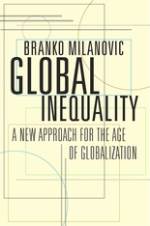
Over the last 2,000 years, the world has reached two peaks of inequality: in late medieval Europe, on the eve of the Black Death, and in modern times, on the eve of World War I. The plague boosted the value of labor relative to landed wealth by decimating the fourteenth-century European workforce.
The twentieth-century world wars, similarly, devastated the physical and financial assets of the wealthy, and led to higher taxes on property and income.
During the Great Compression of the 1940s, the modern welfare state emerged. But, since then, traditional economic theory has struggled to explain the persistence and recurrence of income inequality, particularly in advanced economies. In the 1960s, the Nobel laureate economist Simon Kuznets argued that wealth should be more broadly distributed in advanced economies.
As Kuznets saw it, inequality should rise during the period of industrialization when workers are plentiful and wages are low, but then fall when the slack in the labor market is absorbed.
Needless to say, this picture is at odds with what has been happening in the West. In Global Inequality, a must-read, Milanovic updates mainstream theory by introducing the concept of “Kuznets waves” into the study of the subject. According to Milanovic, inequality is cyclical: it waxes and wanes continuously, owing to interconnected economic, demographic, and political forces. Inequality rises as a result of nominal GDP growth, technological progress, and special-interest lobbying activities, and falls as a result of wars, diseases, and redistributive policies.
In the pre-industrial era, according to Milanovic, these waves were governed by Malthusian (demographic) dynamics. Inequality would rise with population and income growth, then decline when wars or famines reduced the population and brought the economy back to subsistence levels.
The difference in modern times is that, instead of population growth, technological change and globalization have been the main drivers of inequality.
The first modern Kuznets wave started at the end of the nineteenth century, when industrialization and economic integration created new wealth disparities. But by the 1970s, inequality had reached new lows, owing to the two world wars, the political upheavals of the 1960s, and the growth in the number of college graduates in Western countries. Since then, however, the world has been riding a new Kuznets wave, powered by advances in information and communication technologies (ICT) and Washington Consensus policies advocating capital-flow and trade liberation. And the technologies of the Fourth Industrial Revolution – artificial intelligence (AI), robotics, and so forth – are further widening the gap between the highly skilled and everyone else.
The similarity between the two inequality-increasing waves is striking – and appalling. Before the First Industrial Revolution in the late eighteenth century, a hereditary class structure was the main source of inequality around the world. Then, when GDP growth took off in the West, location replaced class, such that, 70 years ago, a poor person in Germany was rich by Indian standards. But now that other countries are catching up to the West, the income gaps associated with location are closing, and the centrality of social class has returned.
SEPARATE AND UNEQUAL
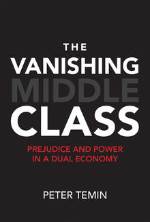
To understand how a modern “classist” society functions, look no further than the US in 2017. Social status there has never been denoted by noble titles; prestigious academic degrees fill that role. Still, one’s origins, far more than merit, determine one’s chances for success in life. Being admitted to an Ivy League university depends largely on one’s family background. Wealthy, well-educated parents have the means to raise ideal college applicants, and to afford rising tuition costs. And, because the top employers seek recruits from the top universities, class privilege is perpetuated from generation to generation.
If this sounds to you like the end of the American Dream, then you will find much to agree with in Temin’s The Vanishing Middle Class, which describes the socioeconomic mechanisms that are preventing an ever-larger share of the American population from enjoying the benefits of economic growth. In Temin’s view, the US is regressing quickly toward the status of an emerging economy, where the system works well for a select few and poorly for everyone else.
In the US, a small, predominantly white upper class holds a disproportionate share of money, power, and political influence. Its members, who make up 20% of the American population, are highly educated, well-paid, tech-savvy professionals who work primarily in finance and technology. At the other end of the spectrum is the majority: low-skilled, low-wage workers whose economic situation – substandard education, dilapidated housing, precarious employment – resembles that of workers in developing countries.
As Temin reminds us, American’s class divide has a clear racial element. There is just one African-American on the Forbes list of the 400 wealthiest Americans for 2017. At the same time, African-Americans comprise nearly 40% of the US prison population, but less than 15% of the total population; among African-American men, one in three will serve jail time at some point in their lives.
Still, racial minorities are not the only Americans living as second-class citizens. A large chunk of the white population in the Rust Belt and elsewhere has also been marginalized – precisely the demographic segment that put US President Donald Trump in the White House.
According to Temin, inequality is now so entrenched in American society that it might never be uprooted. Only education can ensure that Americans will have a chance at employment in the high-paying, high-skill sectors of the twenty-first-century economy. But for the children of most low-wage families, there are simply too many obstacles. Public schools in low-income areas are too decrepit and underfunded to give their students the qualifications needed to join the elite. Temin, for his part, argues that such hindrances to social mobility are created deliberately by the ruling minority, whose primary concern is its own preservation and reproduction as a privileged class.
HOW THE OTHER 80% LIVES
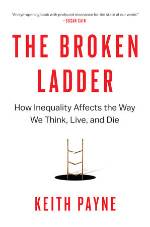
As class divides widen, those on the bottom start to have radically different experiences of the world than those at the top. And as Payne shows in TheBroken Ladder, many of those experiences include psychological suffering. For an issue that is dominated by sociological and economic analyses of the factors behind wealth disparities, Payne’s is a brilliant and important contribution.
As a psychologist, Payne is interested in how inequality affects individuals. First, he explains, “Inequality is not the same as poverty,” because it “makes people feel poor and act poor, even when they’re not.” When people perceive vast economic disparities between themselves and others, their decision-making about savings and personal finances, political beliefs, and even their health changes.
More telling than one’s position on the income scale is the subjective process by which one establishes one’s own social status. According to Payne, those who feel poorer than their neighbors, their parents, or some other referent are more likely to suffer from depression, anxiety disorders, cardiovascular disease, obesity, and diabetes – regardless of their socioeconomic situation. Not surprisingly, people with these conditions tend to have a shorter life expectancy than the rest of the population.
In the US, that now describes many middle-aged whites. According to a landmark 2015 study by economists Anne Case and Angus Deaton, midlife mortality rates have improved for all US demographic groups except non-Hispanic whites. As Payne puts it, members of this group are not just “dying of cirrhosis of the liver, suicide … and overdoses of opiates and pain killers,” they are “dying of violated expectations.” Despite the fact that “high school-educated whites make more money on average than similarly educated blacks,” he writes, “the whites expect more because of their history of privilege.” They grew up believing – and constantly being told – that they would be better off than their parents. Instead, they have been condemned to low wages and unstable Jobs.
THE VIEW FROM THE PENTHOUSE
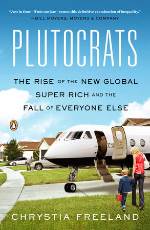
At the other extreme, there is the top 1%, whose lived experience, and thus worldview, could not be more different from those at the bottom. Although it was published five years ago, Freeland’s Plutocrats is still the most incisive and intelligent account of how the world’s wealthiest think and behave. Few have observed the global elite in the wild so closely, and for so long.
The super-rich, as Freeland calls them, are essentially a tribe that lives in a separate world that has neither national boundaries nor time zones. Regardless of where they are from, they all attend the same elite universities in the United Kingdom and the US. After that, they all begin their careers in the same top consulting firms and investment banks, attend the same exclusive conferences in Davos and Dubai, and vacation in the same places in Switzerland and US coastal enclaves. They have no problem spending $3 million – equivalent to the combined average annual income of more than 50 Americans – on a birthday party. And they wash their hands by dabbling in philanthropy.
Of course, despite these similarities, the super-rich are not all the same. Some are entrepreneurs or entertainers who create real value for society. Others run hedge funds, private-equity firms, or other rent-seeking businesses and contribute little to nothing. In either case, most were actually not born rich. They built their fortunes through hard work, talent, and discipline. Starting in nursery school, they embraced the Darwinian classroom struggle to win entry into a top university. And as adults, they work long hours at the expense of their private lives. Having made it to the top, they live with a constant fear of falling from grace.
But even if merit brought many of the super-rich to where they are, they have become so powerful that they can deny meritocratic outcomes to everyone else. Freeland, for her part, points out that this is not unprecedented. The Republic of Venice unwittingly engineered its own downfall when Venetian elites in the fourteenth century created a “Book of Gold” to designate which families would belong to a permanent class of nobility, and thus the oligarchy. An economically dynamic commercial power quickly decayed into a sclerotic, closed city-state.
IN SEARCH OF A CURE
The world is now in a state of limbo. Today’s levels of inequality, as all of these books show, can hardly be regarded as stable or under control. Moreover, as technological innovation accelerates, the casualties will mount. Yet, according to Milanovic, we are still waiting for the current Kuznets wave to crest. Inequality is high, but it is still not as high as in the peak periods just before the Black Death and the outbreak of World War I.
What can be done? Many commentators recommend improving the availability and quality of public education. Others have proposed more effective ways to tax wealth, such as a global tax on capital income, higher marginal tax rates, more aggressive estate taxes, or even a tax on robots. And still others are calling for a universal basic income (UBI).
But none of these will be a panacea. Educational policies take years to gain traction; taxing the global super-rich would require a level of international cooperation that does not exist today; and a UBI is simply unaffordable for most – if not all – governments.
Scheidel would remind us that political reforms usually are not up to the task of tackling inequality.
Yet, even if democratic measures cannot reverse inequality, they may be able to keep it in check, and are thus worth pursuing.
The alternative, of course, could be a cataclysmic leveling in the not-too-distant future. Climate change is already wreaking havoc on some national economies and creating tensions over shrinking resources. Populism, nationalism, and xenophobia are threatening to consume liberal democracies from within. An increasingly ambitious China and a newly protectionist America could end up on a collision course over trade or territorial claims in Asia. And, at some point, self-learning robots might eliminate most jobs, and topple Western civilization itself.
How much more inequality can the world tolerate? Sooner or later, we will cross another historical threshold, on the far side of which await the Four Horsemen of Leveling, eager for another stampede, if we let them have it.
Edoardo Campanella is a Future of the World Fellow at the Center for the Governance of Change of IE University in Madrid.
0 comments:
Publicar un comentario